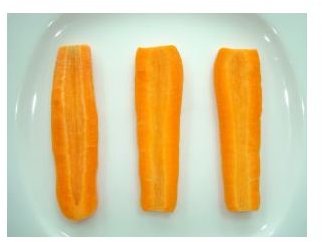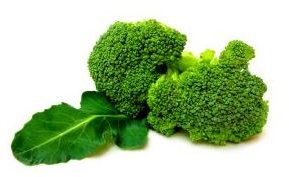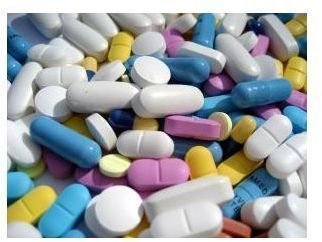Facts About Vitamins for Good Health
What foods provide vitamin E? What does vitamin K do? How much vitamin A do I need? Should I take supplements? Vitamins are essential to good health, but, unless you’re armed with some basic information, the conflicting information can be confusing. Here are the basic facts about vitamins A, B-complex, C, D, E, and K, from what they do to the foods in which they are found to the recommended dietary allowances (RDA) of each.
First, though, a few definitions:
Water soluble – vitamins B-complex and C are not stored in the body, and must be replenished continuously in your diet.
Fat soluble – vitamins A, D, E, and K, are stored in the liver and are not needed daily in your diet.
Additionally, the RDA will often be given as a range for adults. The low end is for women, the higher number for men.
Vitamin A

Vitamin A helps regulate the immune system and aids in infection resistance. There are two kinds of vitamin A. The kind from animals is called retinol; the kind from plants is called carotenoids. Retinol is absorbed by the body more efficiently than carotenoids, which means you need to consume more vitamin A in plant form to equal the same amount in animal form.
Foods high in vitamin A include liver, carrots, spinach, kale, cantaloupe, and apricots. The RDA is 2,310 to 3,000 International Units (IU) daily. Maximum is 10,000 IU.
Blindness is the most tragic effect of vitamin A deficiency. Rarely seen in developed countries, but 250,000 to 500,000 children in developing countries go blind every year from vitamin A deficiency.
Vitamin A may lower cancer risk, but too much vitamin A could increase the risk for osteoporosis.
Vitamin B-complex
The B-complex is made up of nine different B vitamins:
- thiamine (B1)
- riboflavin (B2)
- niacin (B3)
- pantothenic acid (B5)
- pyridoxine (B6 )
- biotin (B7)
- inositol (B8)
- folic acid (B9)
- various cobalamins (B12)
B-complex vitamins are important for metabolizing food, as well as for the non-inconsequential basics of supporting healthy skin, good vision, appetite, and a healthy nervous system. As for other benefits, B-complex may help reduce the risk of heart disease and dementia.
Foods high in B-complex vitamins include yeast, seeds, fortified cereals, beans, eggs, liver, meat, fish, and some fruits and vegetables. B-complex vitamin deficiency is rarely seen in the United States. Since it’s water soluble, B-complex is difficult to overdose on. When too much is ingested, damage, such as nerve damage caused by too much B6, is reversible when intake goes back to normal.
Vitamin C
Vitamin C has a well-known reputation as a nutritional powerhouse. It’s an antioxidant that aids in wound healing, and improves immune function and iron absorption. Without vitamin C, the body can’t properly construct and maintain connective tissue, and scurvy results.
The RDA for vitamin C is 75 to 90 mg/day, up to a maximum of 2,000 mg. Ingestion of vitamin C near and over the maximum may result in diarrhea, nausea, and abdominal cramping.
Foods high in vitamin C include red bell pepper, oranges, kiwi fruit, grapefruit, and broccoli.
Vitamin D
Commonly associated with milk because most milk is fortified with it, vitamin D is actually created in the body through sun exposure. Vitamin D builds bones and teeth, and keeps them strong.
Adults under 50 should get 200 IU of vitamin D daily. Between ages 50 and 70 you should get 400 IU, and over 70 600 IU.
Food sources for vitamin D include fatty fish such as salmon and tuna. It can also be found in beef liver, cheese, egg yolks, mushrooms, and fortified milk. Too little vitamin D results in rickets in children and bone pain and muscle weakness in adults. Too little vitamin D and too little calcium in adults results in osteoporosis.
Vitamin E
Vitamin E is an antioxidant that aids in immune function. There are claims that vitamin E may improve heart health, decrease cancer risk, reduce the risk of eye problems, and prevent dementia, but research is still ongoing.
The best food sources for vitamin E include seeds, nuts, and vegetable oils. Wheat germ is an excellent source. Vitamin E deficiency is very rare, but results in nerve damage and depressed immune response. The RDA for vitamin E is 15 mg/day.
Vitamin K

Vitamin K helps blood to clot properly and aids in bone health. Deficiency is rare, because bacteria that live in your intestines can produce vitamin K.
Foods that contain vitamin K include leafy greens, beef liver, green tea, broccoli, kale, spinach, cabbage, and asparagus. Basically, any dark green vegetable will contain vitamin K because the vitamin is present in chlorophyll.
The RDA is 90 to 120 mcg.
Don’t shop blindly. Now that you’re armed with these facts about vitamins, you can make informed choices about what to eat and what supplements to take, if any.
References
Viatmin and Mineral Supplement Fact Sheets, NIH Office of Dietary Supplements (https://ods.od.nih.gov/Health_Information/Vitamin_and_Mineral_Supplement_Fact_Sheets.aspx)
Water Soluble Vitamins (https://www.ext.colostate.edu/pubs/foodnut/09312.html)
Vitamin K (https://www.umm.edu/altmed/articles/vitamin-k-000343.htm)
Linus Pauling Institute at Oregon State University (https://lpi.oregonstate.edu/infocenter/vitamins/)
Images used under Creative Commons license from dimshik, marchelo28 and nkzs at sxc.hu.
